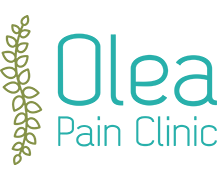Nerve Pain Treatment
Nerve pain treatment can take a number of forms, from medication to injections and forms of stimulation. In this section, we look at some common treatments for nerve pain.
Scar injections and Pulsed Radiofrequency
Scar injections have the ability to reduce the inflammation of tissues and nerves, which can often be the cause of Chronic Post Surgical Pain. They involve direct administration of a combination of local anaesthetic and steroids which act as an anti-inflammatory medication.
Pulsed radiofrequency of the scar may be indicated if there is a significant reduction in the pain levels after the scar injection to modulate pain transmission thereby prolonging the benefit.
Patients are then monitored in a recovery area before transfer to the ward and discharge home. Patients may experience a numb feeling for a few hours. Pain at the injection site may increase for five or more days. It is advisable to rest the area for 24 hours and resume stretches and exercises when the pain eases.
There is a variable response to injection treatment. It is important to discuss both the benefits and risks of the procedure with your doctor before any agreement to undergo the procedure is reached. Scar injections are typically very safe. Although the chance of any complications is generally low, as with all surgical procedures, there is an element of risk involved including failure to get benefit or pain aggravation. Possible complications, as with all interventional procedures, include bleeding, bruising, infection and nerve injury. There may be an allergic reaction to the steroid or any of the medications.
Qutenza treatment
Qutenza® is the brand name for a capsaicin patch 8%, which can be used for the management of neuropathic pain. The patch performs the function of delivering a high dose of capsaicin through the skin to the nerves targeted reducing their sensitivity to pain. After a one-hour (30 minutes for feet) application of the Qutenza® patch, as much as three or more months of pain relief can be provided.
This is typically a day case procedure with some patients getting localised skin irritation, burning and blisters in the area of patch application. There is a variable response to Qutenza treatment. Pain induced blood pressure rise may occur. Ice packs and painkillers can be used to treat these post-procedural flare-ups.
Pudendal nerve block and Pulsed Radiofrequency
Pudendal neuralgia is a known cause of perineal pelvic pain that can occur in males or females. The symptoms may affect one or both sides depending on the site of entrapment, damage or irritation of the Pudendal nerve.
The pain is typically worse on sitting with relief on standing or laying down. Symptoms described are neuropathic (nerve-like) in nature: sensitivity, burning, shooting, numbness, pins and needles. The areas affected are the perineum, scrotum, penis, vulva and the back passage. A sensation is often described of a swelling in the areas mentioned. Sexual dysfunction is a common complaint.
Procedure
The procedure will take place in theatre under full aseptic conditions with the patient on his or her stomach.The injection site is thoroughly cleansed and numbed with an anaesthetic before fluoroscopy (live X-ray) or ultrasound is used to guide the needle into the right area to avoid organ injury. A small needle in the back of your hand can be used to administer sedation or in case of an emergency.
The physician then directs a needle into the pudendal nerves injecting a small mixture of steroid (anti-inflammatory medication) and anaesthetic. These injections can be both diagnostic and therapeutic.
Pulsed radiofrequency is a relatively new treatment which uses neurostimulation therapy in order to modulate the function of the nerve. As a result the pain signals to the brain are modified by the electrical pulse, meaning the patient does not feel the same pain as he or she did previously. This may be indicated if there is a significant reduction in the pain levels after the pudendal nerve block to prolong the benefit. This procedure can be described as a ‘retuning’ of the nerves so that they modulate pain transmission.
Patients are then monitored in a recovery area before transfer to the ward and discharge home. Patients may experience a numb feeling for a few hours. Pain at the injection site may increase for four or more days. It is advisable to rest for 24 hours and resume stretches and exercises when the pain eases.
Complications
There is a variable response to injection treatment. It is important to discuss both the benefits and risks of the procedure with your doctor before any agreement to undergo the procedure is reached. Although the chance of any complications is generally low, as with all surgical procedures, there is an element of risk including failure to get benefit or pain aggravation. Allergic reactions to the steroid or any of the medications are uncommon, the injection may cause an infection or bleeding, perineal organ trauma or nerve damage is extremely rare.
